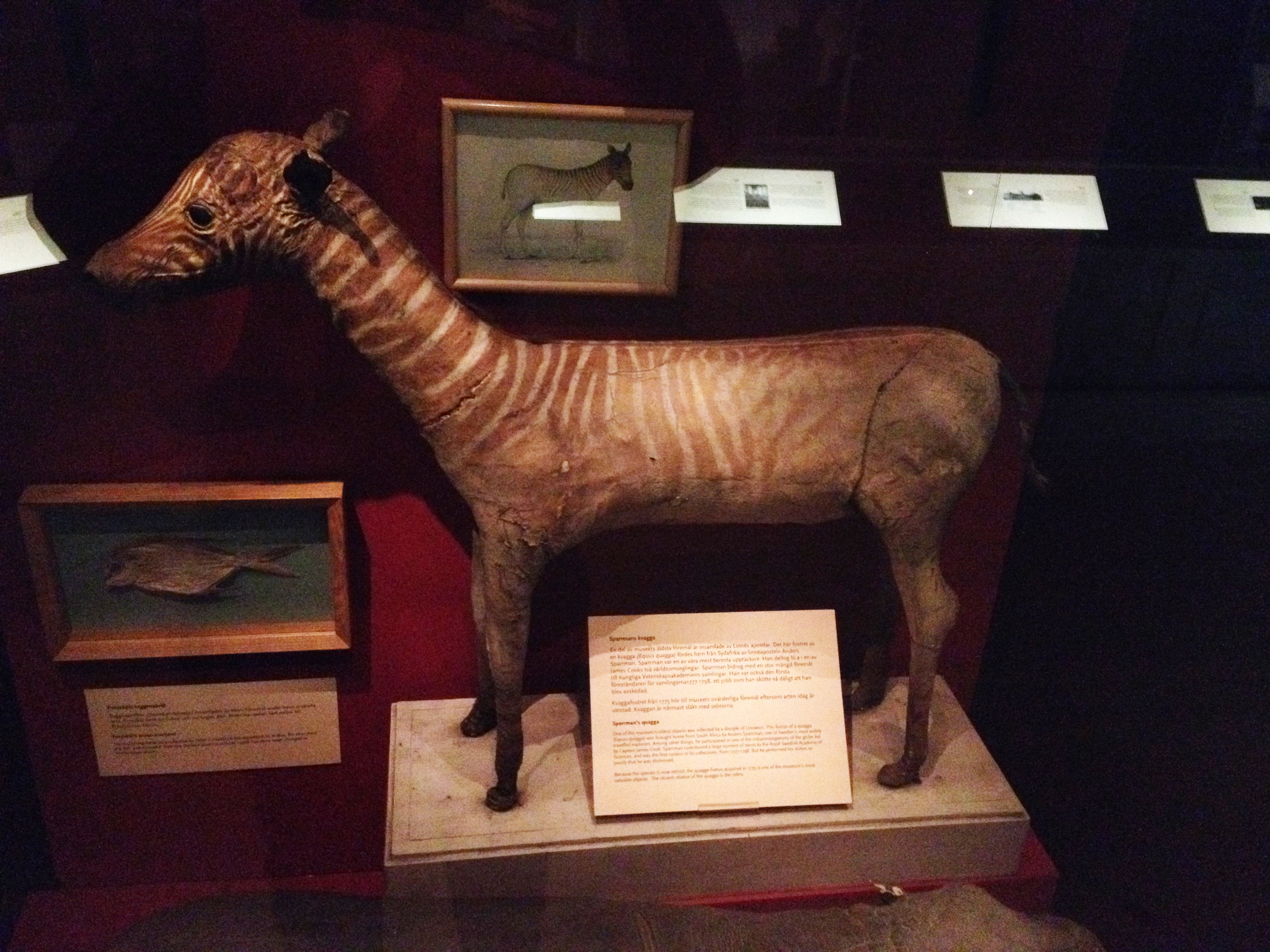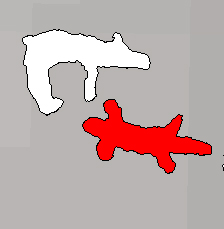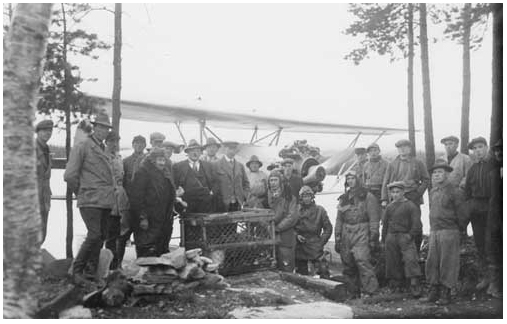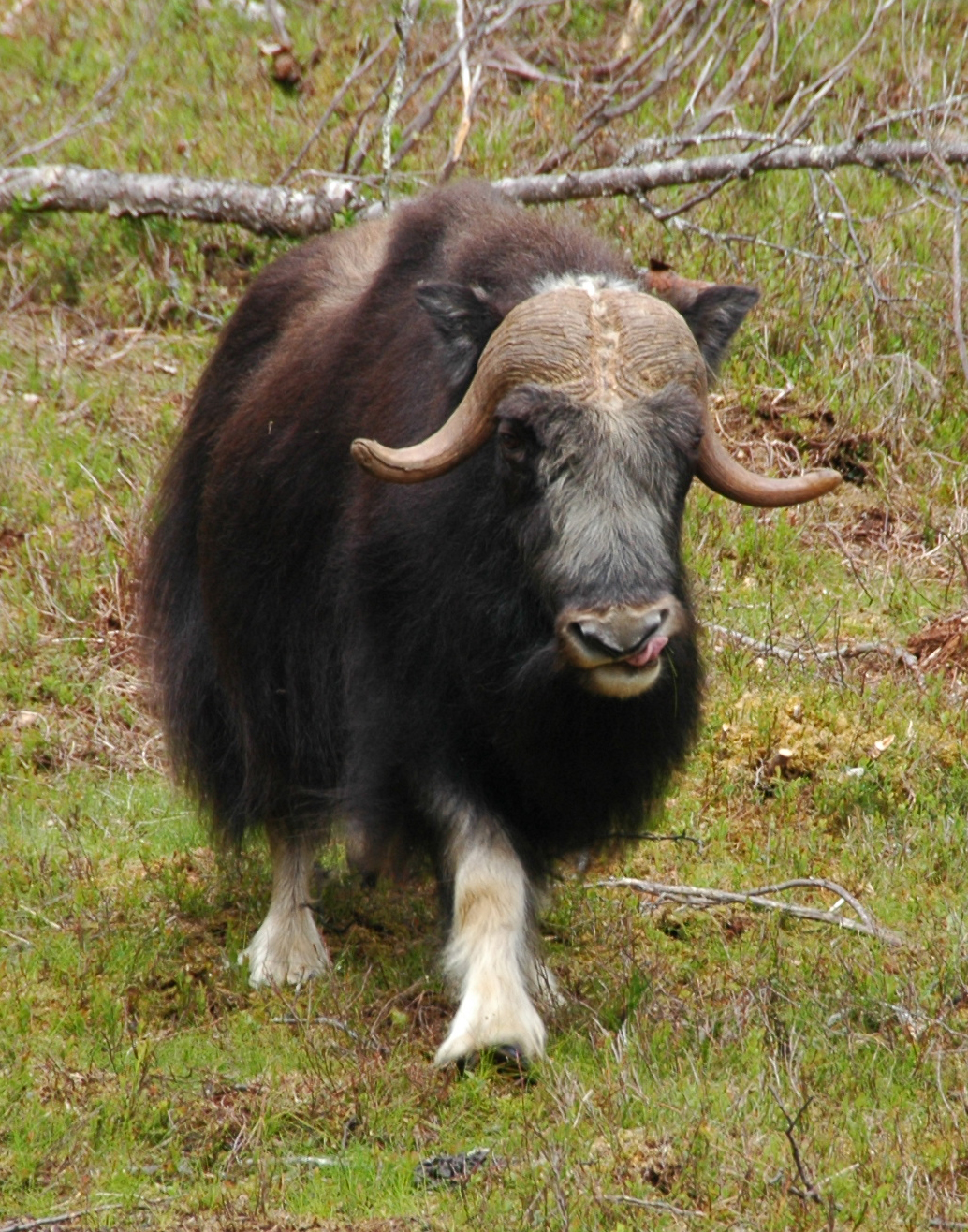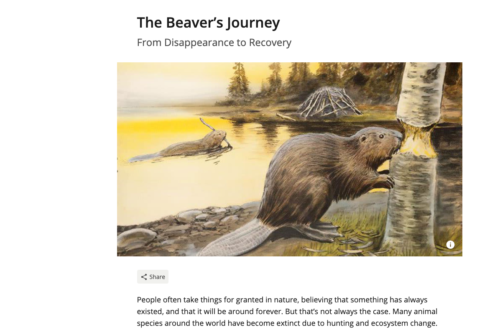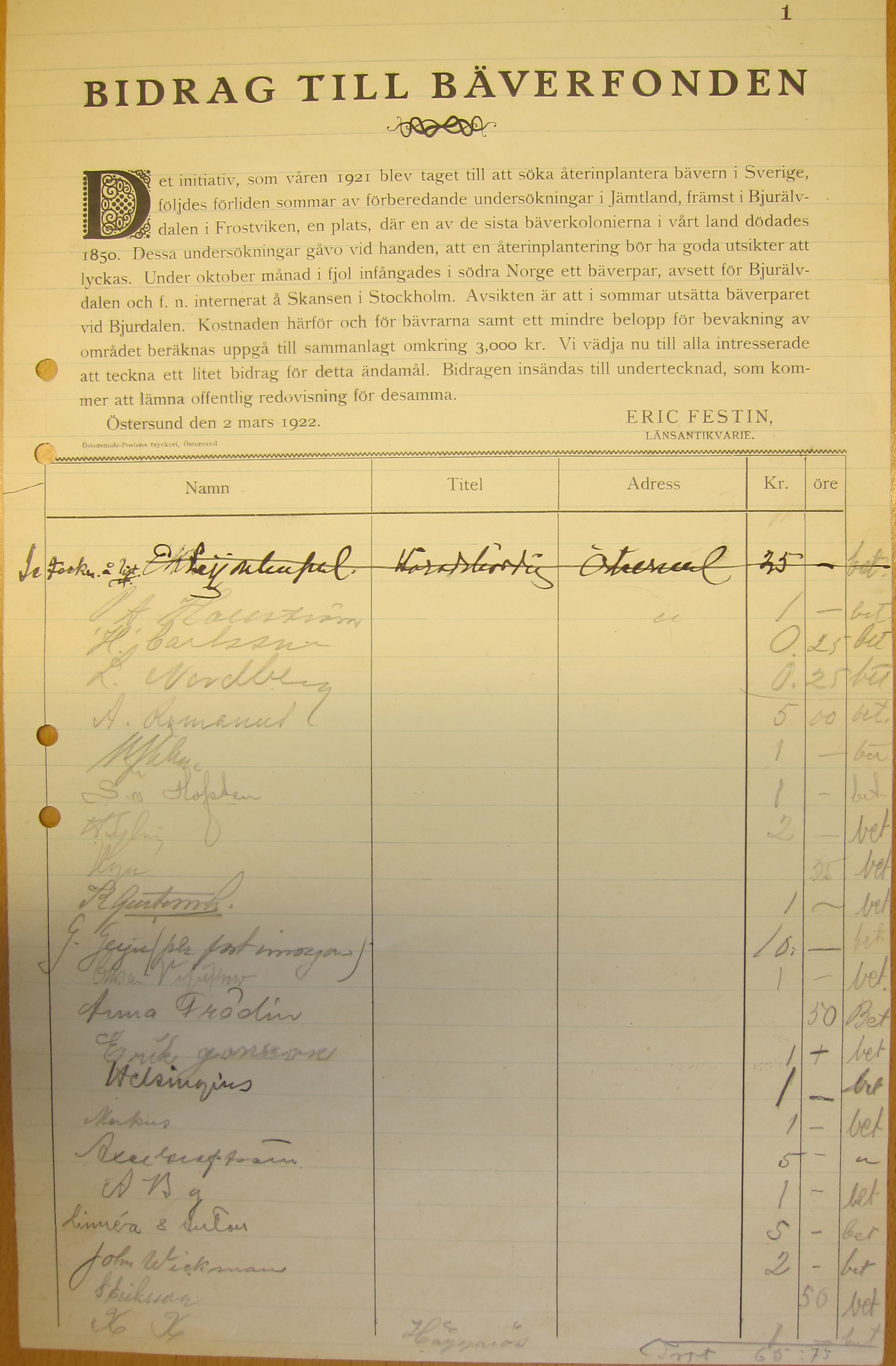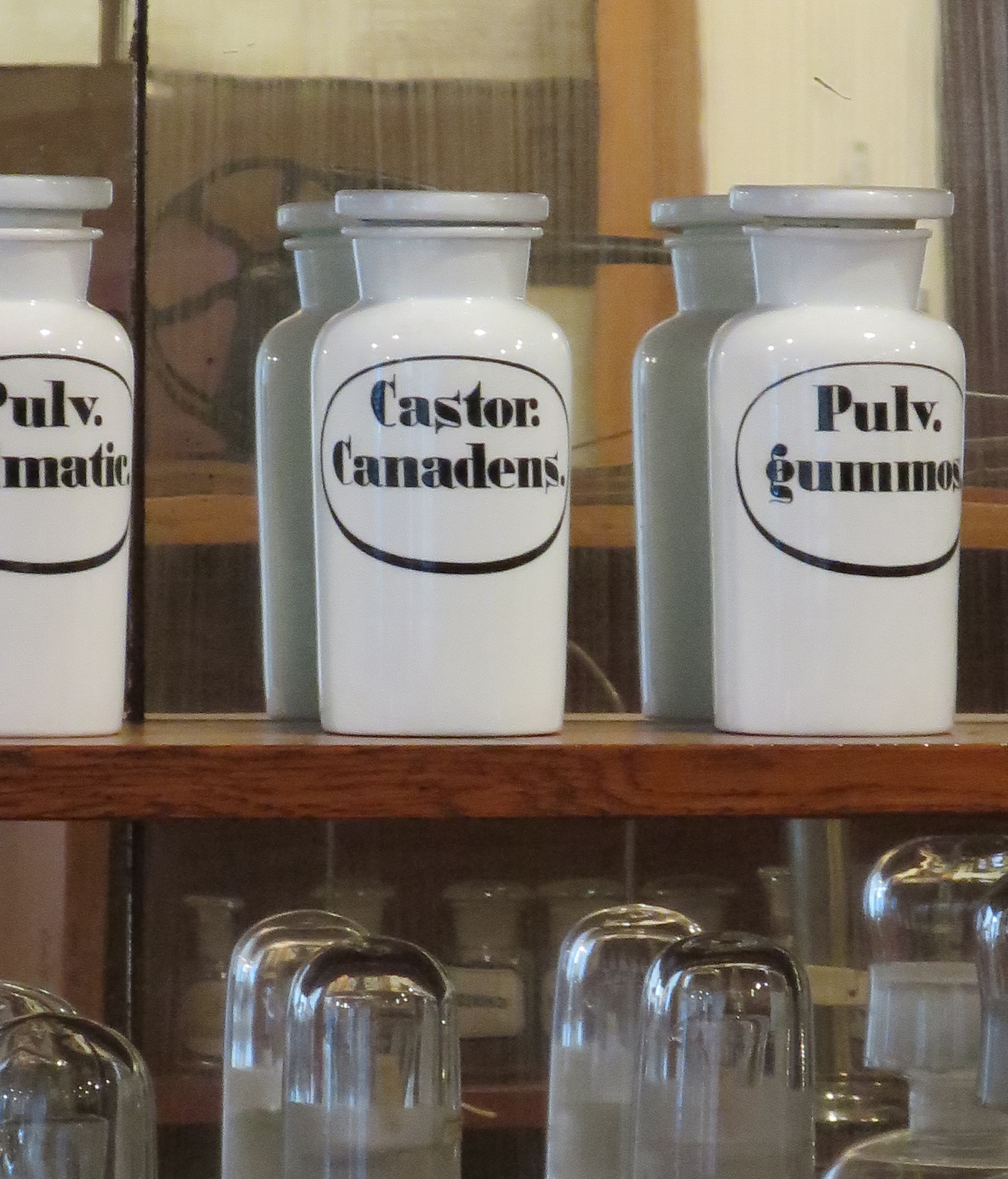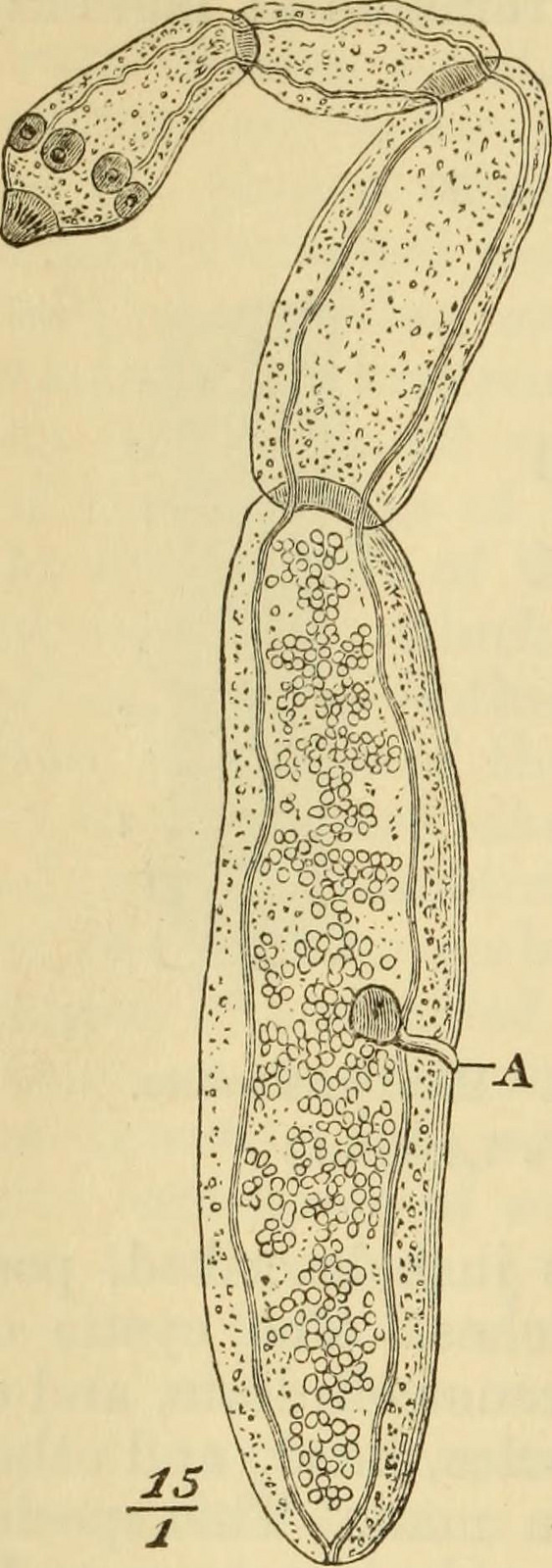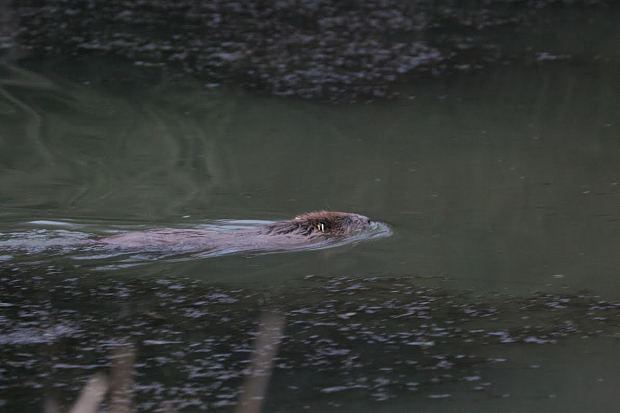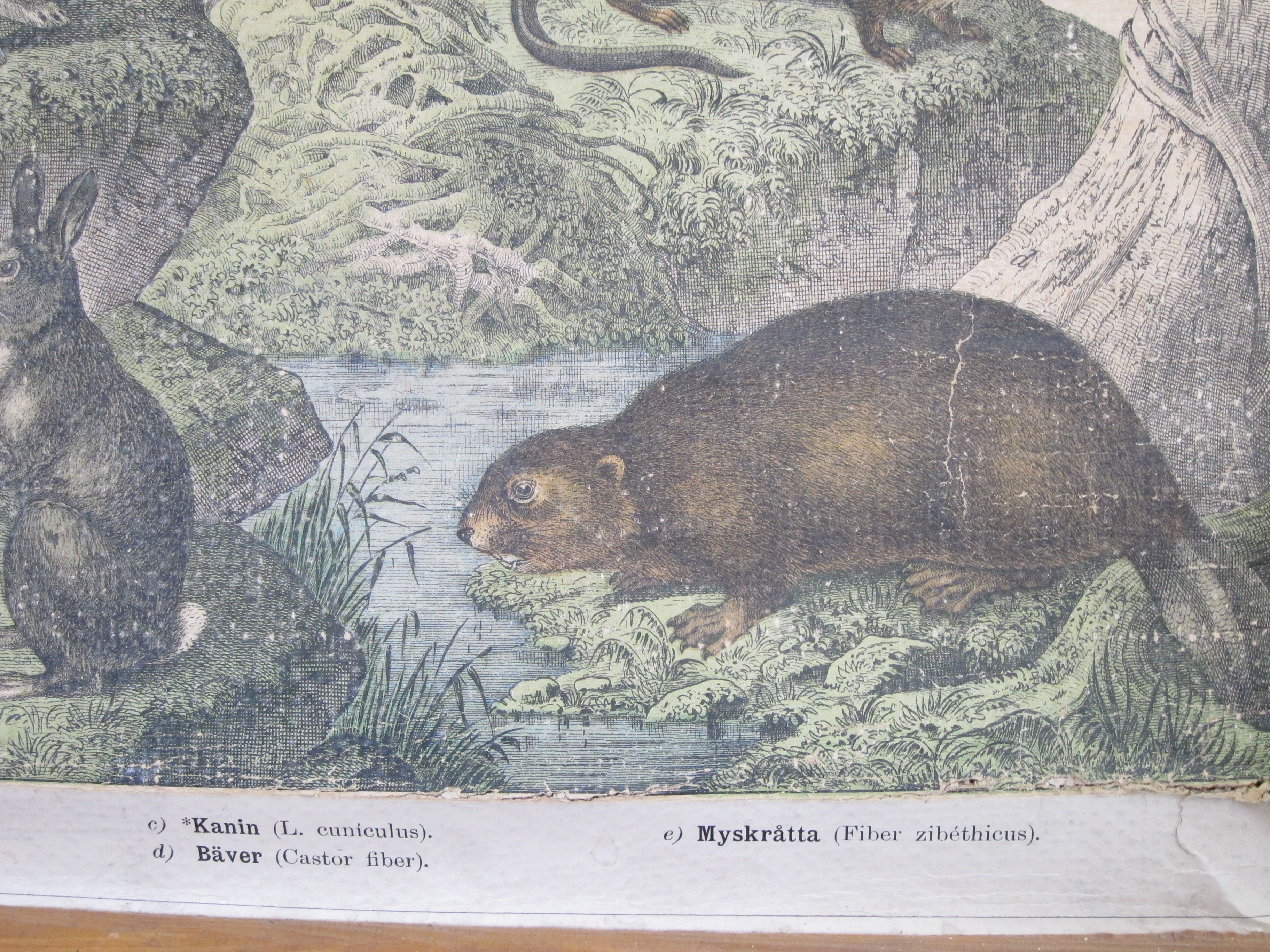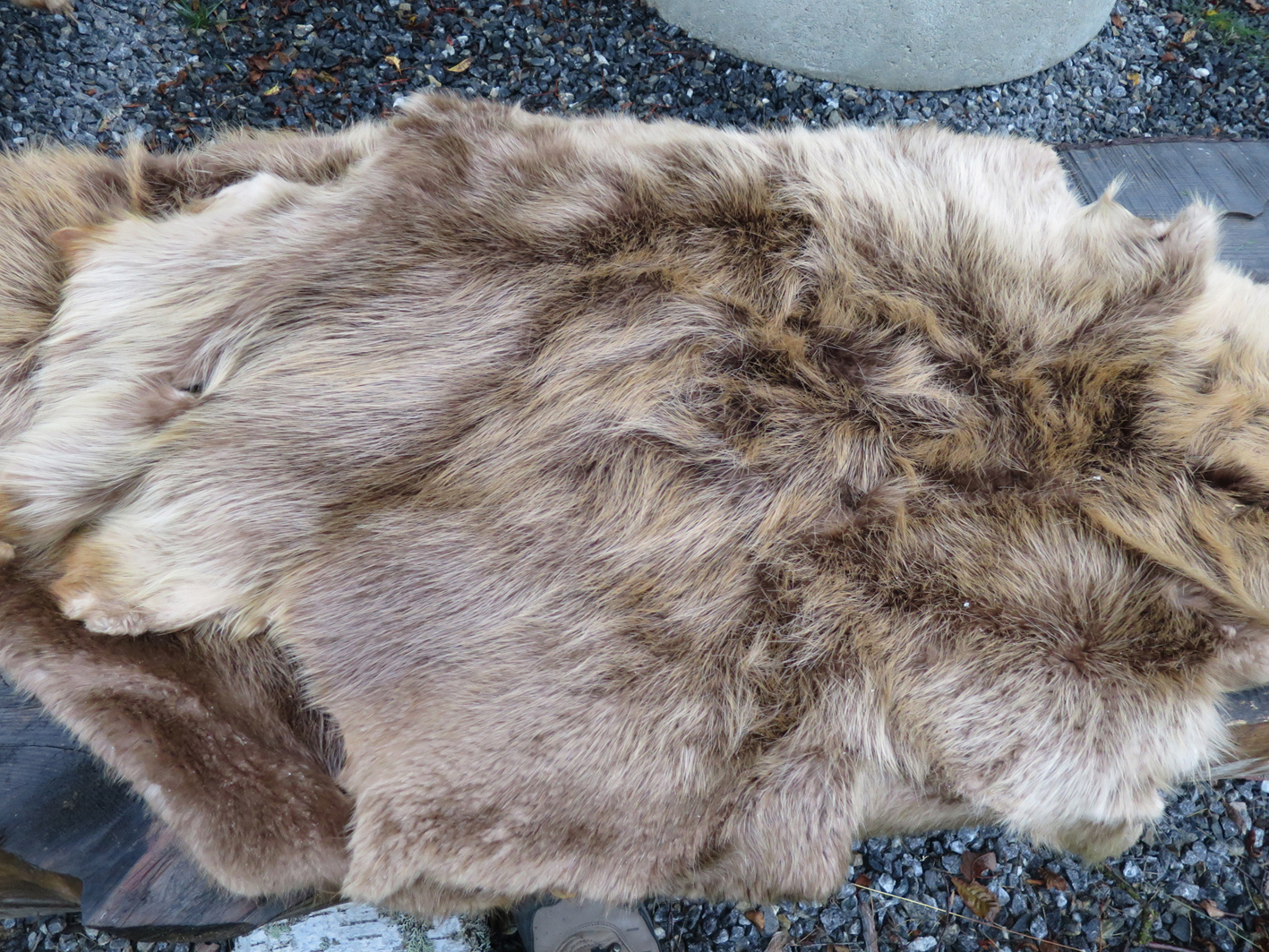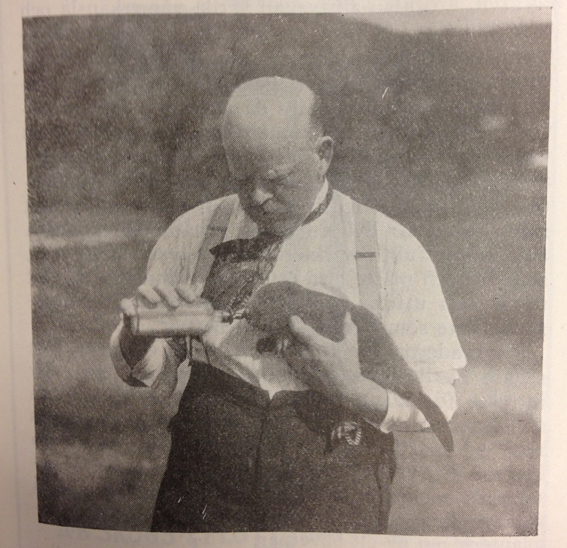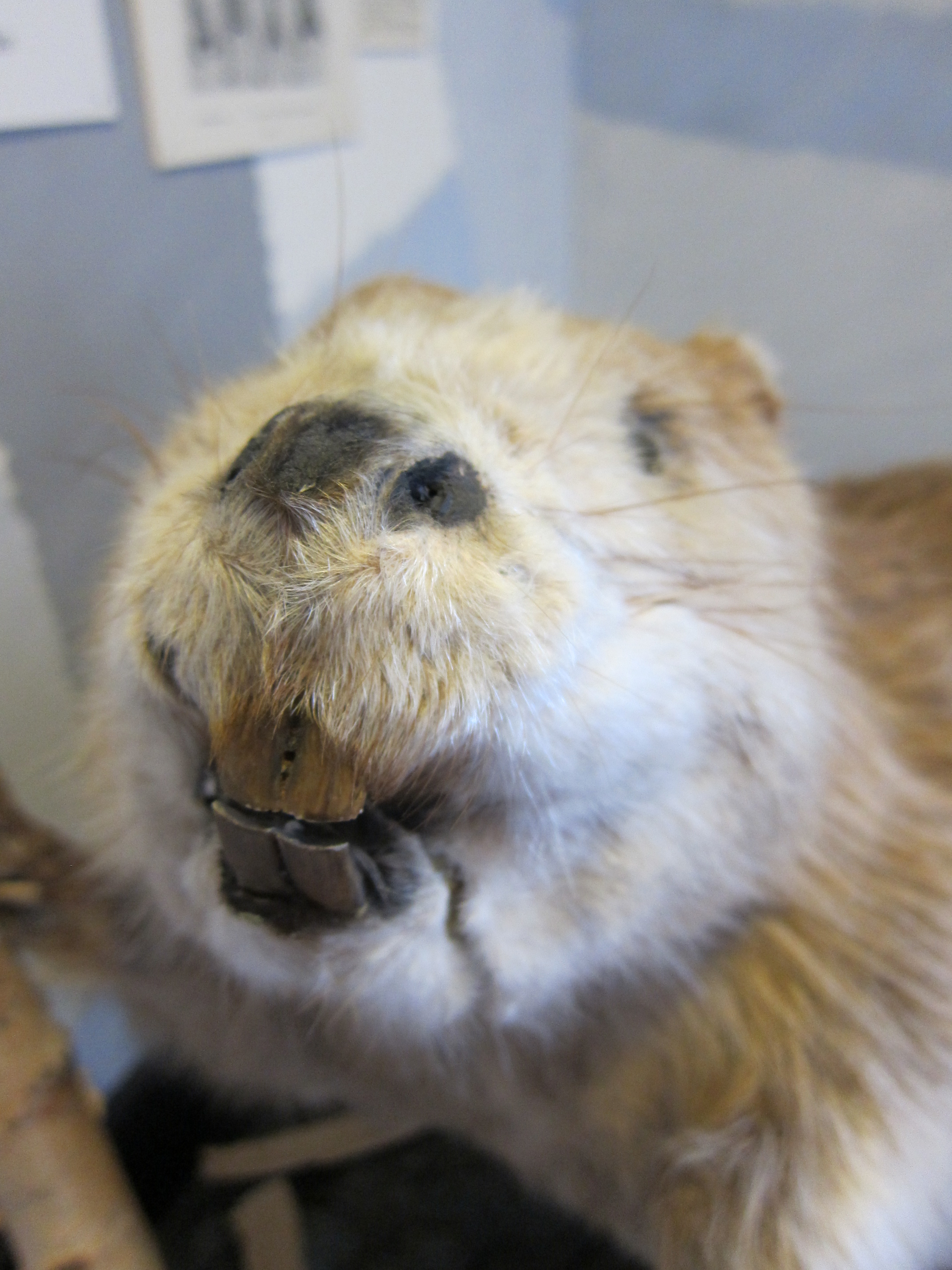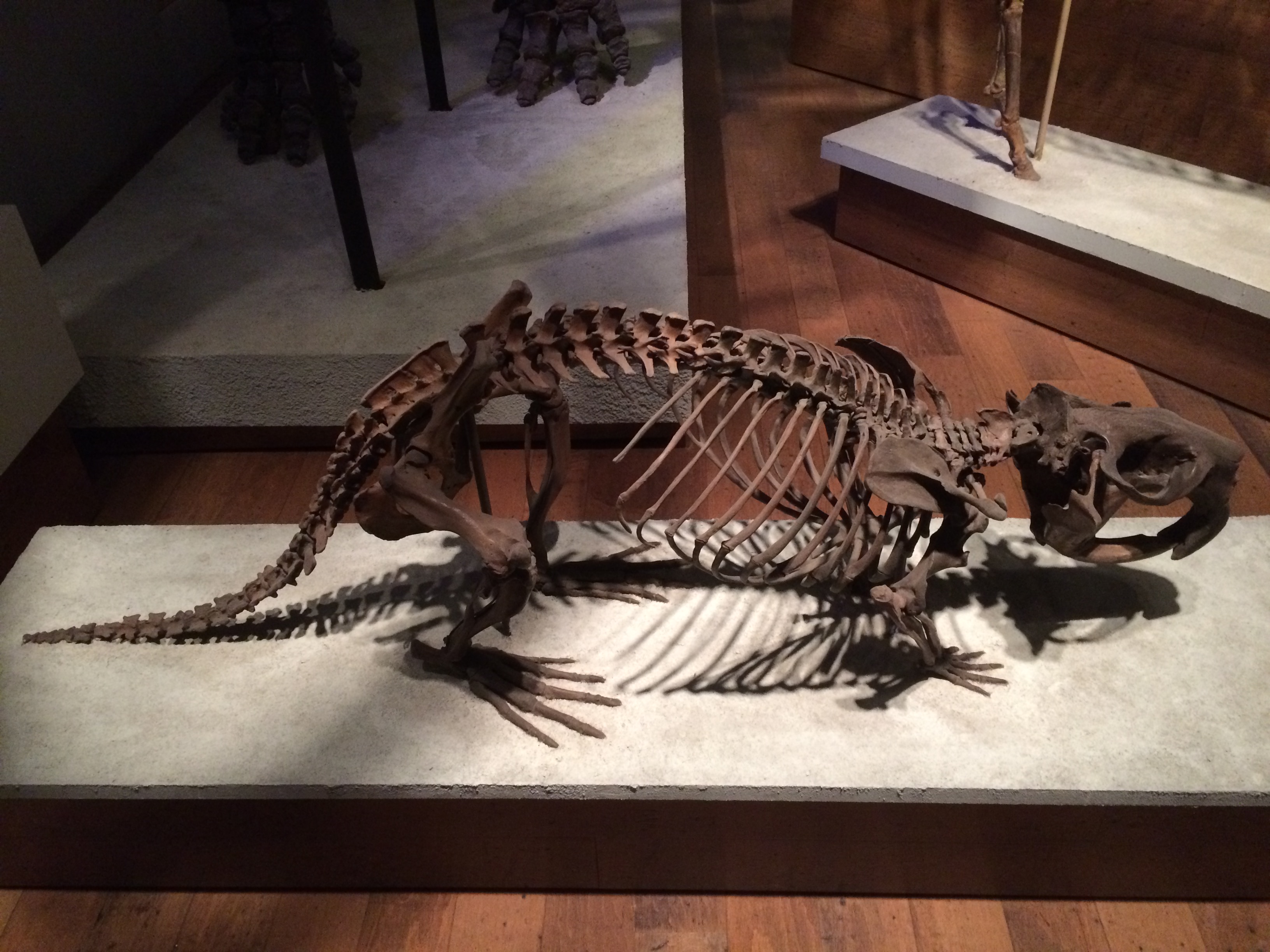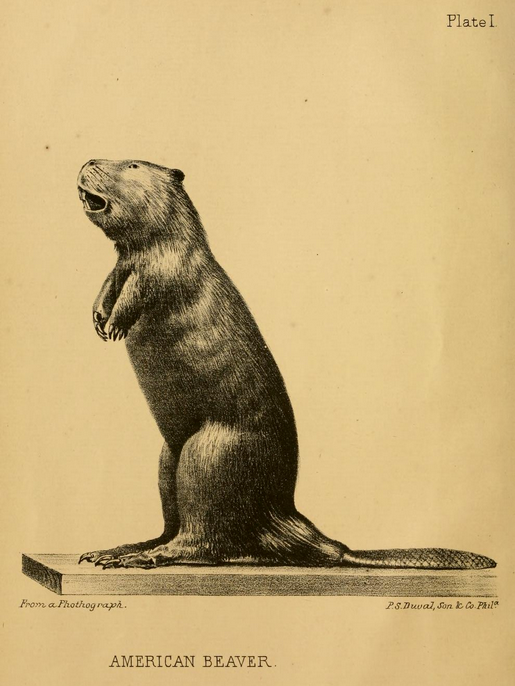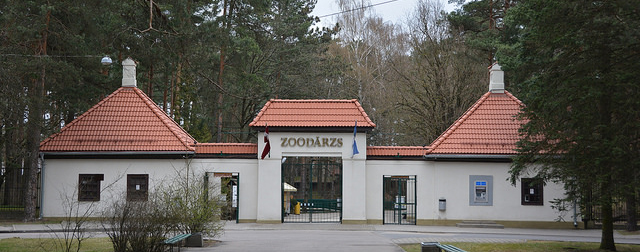beaver
-
The Beaver’s Journey: From Disappearance to Recovery
This year will be a special year for my beaver reintroduction research. 2021 marks the 100-year anniversary of the first time beavers were caught in Norway to be set out in Sweden where they had become extinct. The first component to launch in celebration of the anniversary is a new major digital exhibition on the history of Scandinavian beavers based on my research. The digital exhibition titled The Beaver’s Journey: From Disappearance to Recovery chronicles the history of the reintroduction of beavers in Scandinavia in the early 1900s. I’m proud to say that The Beaver’s Journey is the first exhibition curated by a Norwegian-based project team on the Europeana cultural heritage platform. The exhibition…
-
Beaver history on TV
I appeared on the NRK live broadcast television program Sommeråpent on 8 August 2017. The broadcast was at Nelaug train station in Åmli kommune. I’ve has worked on the history of beavers in Norway and Sweden and Åmli holds a special place in that history because all beavers in Scandinavia originate from there. I had the chance on the program to introduce this history, as well as the historical use of beaver products. While I was waiting for the filming to begin, I got to sit with the taxidermied beaver on a picnic bench. I had lots of kids stop by so I got to give mini-talks about beavers and…
-
Unexpected media blitz
Earlier this week the press department at my university published a write-up in Swedish about this project based on an interview with me: Utrotade arters återkomst väcker känslor. The university press contact Sofia Stridsman had seen that I had an article in The Washington Post and wanted to find out more about my research. I thought it was a nice gesture, so I quickly agreed to the interview.
-
The tale of two castors
When two things get the same name, it is easy to get them confused. This has happened with two medicines with similar names that have cropped up in my research: castoreum and castor oil. As I mentioned in my last post, the Elvarheim museum in Åmli, Norway, recently opened a new beaver exhibit. I was quite impressed with the set-up. I did, however, notice an error in the display case of beaver products. The case included a beaver felt hat and the beaver gall liquor I’ve tried, both of which are made from beaver parts. It also had a shelf of medicine that was supposed to be from beaver, but the bottles on display…
-
A historian walks through the beaver’s homeland
In historical work, we are called on to imagine ourselves in another time and another place. We try to see the world as the people (or animals) in our stories would have seen it. That’s not always an easy task. But because I was lucky enough to spend the last two days in southern Norway in the homeland of the Scandinavian beaver, it’s now a little easier for me as I write the beaver reintroduction story. Yesterday I walked around the property at Næs Ironworks, which is now a museum featuring the double blast furnace, water-powered hammering shop, and templates for cast iron stoves. It was a lovely clear day for…
-
Beavering away in Västerbotten
Yesterday evening I went on my second beaver safari. This time I was near home–only 36 km away in Vännäs on the Vindel river. We had great luck and saw several beavers right away. Beaver were first brought back to the county of Västerbotten very early in the reintroduction process. In 1924, the second beaver reintroduction in Sweden took place in Västerbotten on the Tärnaån further inland. But no more reintroductions happened in the area until after World War II. In the 1950s and 60s beavers were set out intentionally and more animals migrated in from the neighbouring Jämtland reintroductions. According to an article from 1984 in the journal Från hav…
-
The power of legend
I was thinking this weekend about the repetition of stories. There was some discussion on twitter about whether or not the history of the conservation movement is the same thing as the history of the environmental movement (which came up in the context of an article in the New Yorker, “Environmentalism’s racist history”). While I can sympathise with the desire to make a distinction, I think it matters more how the histories are invoked by people as foundation legends. As humans reflect on themselves, they tell stories to make sense of the world. It seems to me that there is a tendency for people today to judge the past by whether the…
-
Beaver Price Wars
Money may not be able to buy happiness or love, but it can buy beavers. The first pair of beavers bought by Eric Festin in 1921 for reintroduction in Jämtland cost over 3000 Swedish kroner (SEK) for the beavers plus transport. The two pairs bought in 1925 cost 2500 SEK total — but Festin estimated it should have been 4000 SEK if extra expenses were accounted for and the exchange rate between Norwegian and Swedish kroner hadn’t been so favorable (in 1925, 75 SEK bought 100 NOK but by 1927 they had almost equal value and would stay that way until after WWII). This was still significantly cheaper than the first pair. And the…
-
Beavers are back in England
England has now reintroduced its first ‘official’ wild beavers. Video documentation of a beaver colony in Devon in southwestern England had first surfaced in January 2014. Although reports of these beavers had been made since at least 2013, the British authorities could not ignore the new proof of beavers living wild in England. The governmental agencies became concerned that the beavers might pose a risk since the animals had been released there illegally, i.e. no one had gotten a permit for the release and gone through the veterinarian and risk assessment protocols. The early statements by the Department for Environment, Food and Rural Affairs (DEFRA) indicated that there were concerns about the genetic…
-
On the origins of the beaver
Yesterday was International Darwin Day to mark the celebration of Charles Darwin’s birthday on February 12, 1809. In honor of ol’ Darwin, I wanted to write a bit about beaver evolution. Most people think there is one kind of beaver globally. Actually, the beaver of Eurasia (Castor fiber) and the beaver of North America (Castor canadensis) are different species. In fact, they are very different species. Many of the species Darwin used when developing his Origins of Species theory, both domestic animals like dogs and pigeons (he was a pigeon fancier) and wild animals like his famous finches, technically could breed together in many cases even though they either can’t because of…

